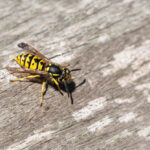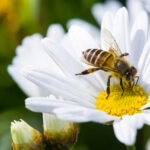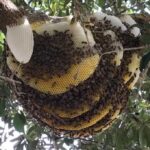
At Keith’s Bee Service, we’ve proudly served the greater Austin, Texas area since 2000, specializing in safe, humane bee removals and effective wasp control. Over the years, we’ve seen firsthand why so many homeowners in Austin face recurring wasp problems and, more importantly, how the right prevention methods can make all the difference. Wasps are drawn to certain environments, food sources, and structural features of homes, but with our local expertise and chemical-free approach, we help homeowners protect their properties safely and effectively. Understanding Why Wasps Are Drawn to Austin Homes Austin’s warm climate, diverse natural landscapes, and thriving residential... View Article

Austin’s natural beauty bursts into full swing each spring and summer, bringing with it blossoming flowers, warm weather, and unfortunately for some, a flurry of bees. For people who enjoy the outdoors but have allergies to bee stings, this can be more than a nuisance—it can be a serious health concern. Whether you’re hiking the Barton Creek Greenbelt or just lounging in Zilker Park, knowing how to avoid bee stings and how to know if you’re allergic to bees can help you enjoy Austin’s buzzing season without fear. This guide dives into what you need to know to stay safe, recognize... View Article

Swarm season is a buzzing reality in Central Texas, especially in areas like Lakeway, TX, where blooming flora and favorable weather conditions offer the perfect environment for honeybee colonies to multiply. If you’ve ever spotted a cluster of bees hanging from a tree branch, fence post, or even your porch, you’ve likely stumbled upon a bee swarm. While it might seem alarming at first glance, swarming is a natural and crucial part of a honeybee colony’s lifecycle. Knowing what to do if you see a bee swarm—and more importantly, what not to do—can ensure both your safety and the well-being of... View Article

Bees are among the most critical creatures in our ecosystem. Their role as pollinators ensures the growth of many plants, including fruits and vegetables. However, the presence of bees in close proximity to homes and high-traffic areas can pose challenges, particularly for individuals with allergies or safety concerns. Homeowners in places like Austin, TX, and surrounding areas such as Pflugerville, TX, often seek a balance between supporting pollinators and keeping their families safe. This blog explores how to achieve bee-friendly landscaping while practicing safe bee control in the garden and how professional bee removal services can help. The Role of Bees... View Article

Bees play an essential role in the ecosystem, pollinating plants and ensuring the growth of fruits and vegetables. However, when bees decide to build their hives in or around homes, it can pose a serious safety risk. While many homeowners may feel the urge to handle the situation themselves, hiring local bee removal professionals is often a much safer and more effective solution. In this blog post, we’ll explore why professional bee removal is safer than DIY methods, emphasizing the importance of safety, expertise, and environmental considerations. The Risks of DIY Bee Removal When dealing with a bee infestation, it’s... View Article





